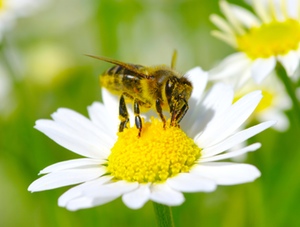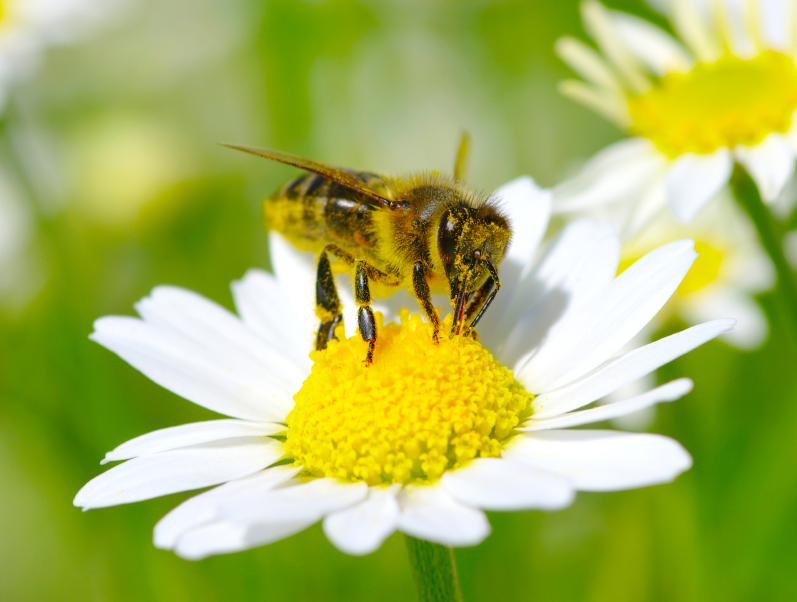Some Communities Dependent upon Few Species
Some ecological communities of plants and creatures that pollinate them can become unduly dependent on a single or a few species, making them vulnerable to collapse, according to an analysis in Physical Review E. The researchers studied the properties of a theoretical model of the networks of codependence in such communities and found that certain characteristics can promote this acute sensitivity to the fate of particular species. They say the results might help biologists understand and manage the current crisis in the world of honeybees.
Relationships such as those between predators and prey, or symbiotic interactions like those of plants and insect pollinators, link the species of an ecological community into a complex network of interdependence. This means that the demise of one species can have knock-on effects that are hard to predict and may occasionally be catastrophic. Entomologists, farmers, and vineyard managers have been concerned about honeybees in recent years because their populations have been declining, for reasons still not fully understood. Since bees play a crucial part in the pollination of plants, including agricultural crops, their decline raises serious concerns about the stability of the entire ecosystems in which they are embedded.
Colin Campbell of Pennsylvania State University in University Park and his colleagues set out to establish why some plant-pollinator communities seem especially dependent on just a few key species. The team previously devised a computer model of plant-pollinator communities that can “grow” many different ecological networks with specific features that the team can define in advance [1]. You can think of the network as a set of points representing species connected by lines that represent interactions between them, such as that between a pollinating insect and a plant it visits for nectar. The network can be complicated because, for example, some insects pollinate more than one plant, and some plants benefit from more than one insect.
In the model, each species’ population is always either “abundant” or “scarce.” At each point in time, a species’ state depends on the previous states of the species with which it’s connected. A viable network is one in which every species eventually remains fixed in one state or oscillates periodically between abundance and scarcity.
The researchers previously studied some factors affecting the long-term stability of such networks [1], and now they have looked specifically at the effects of eliminating species from a stable community. They constructed a representative sample of 1000 networks, each containing 50 plants and 50 pollinator species, and then tested the networks’ robustness by randomly making some species extinct. The team found that, with just a few extinctions, the populations in a community typically adjust, perhaps with some species switching permanently from one state to the other or beginning a periodic oscillation. But occasionally an entire community’s population collapses after the removal of just a few species. In 0.02 percent of the cases, even a single species extinction triggers this collapse.
In these highly vulnerable cases, the researchers found, the networks have a strongly hierarchical structure—a large “nestedness”—like the successive branching of a tree from its central trunk, rather than the more homogeneous network of a grid. Moreover, the central core of this hierarchy in such cases is a small group of highly interconnected species. Campbell explains that the combination of these two features—large nestedness and a small, highly interconnected core—“results in a network that relies too heavily on a single species or small set of species.”
“The conclusions are novel and very timely,” says Stefano Allesina, a specialist in modeling ecosystem networks at the University of Chicago. “My guess is that the model is going to be very influential—it appears to have a lot of potential.”
Although the study focuses on plant-pollinator networks, in which collapses resulting from single species are rare, Campbell expects the results to be relevant for other communities where complete collapse is more common. The findings might help to identify solutions for such fragile communities. “By identifying which species serve as ‘cornerstones’ necessary for the survival of the community,” says Campbell, “more informed management decisions can be made—for example, to introduce species that will bolster the cornerstone species.” In the case of honeybees, for example, boosting the populations of critical flower species might help, he says.
–Philip Ball
Philip Ball is a freelance science writer in London. His latest book is How Life Works (Picador, 2024).
References
- C. Campbell, S. Yang, R. Albert, and K. Shea, ”A Network Model for Plant-Pollinator Community Assembly,” Proc. Natl. Acad. Sci. U.S.A. 108, 197 (2010)





